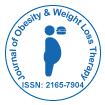Nosso grupo organiza mais de 3.000 Séries de conferências Eventos todos os anos nos EUA, Europa e outros países. Ásia com o apoio de mais 1.000 Sociedades e publica mais de 700 Acesso aberto Periódicos que contém mais de 50.000 personalidades eminentes, cientistas de renome como membros do conselho editorial.
Periódicos de acesso aberto ganhando mais leitores e citações
700 periódicos e 15 milhões de leitores Cada periódico está obtendo mais de 25.000 leitores
Indexado em
- Índice Copérnico
- Google Scholar
- Abra o portão J
- Genâmica JournalSeek
- Centro Internacional de Agricultura e Biociências (CABI)
- RefSeek
- Universidade Hamdard
- EBSCO AZ
- OCLC – WorldCat
- Catálogo online SWB
- Texto completo do CABI
- Cabine direta
- Publons
- Fundação de Genebra para Educação e Pesquisa Médica
- Euro Pub
- Universidade de Bristol
- publicado
- ICMJE
Links Úteis
Diários de acesso aberto
Compartilhe esta página
Abstrato
Overweight and Obesity in the Reproductive-Age Population of the Central Pennsylvania Women's Health Study
Geyer N
Over 54% of currently non-pregnant women aged 18-45 in Central Pennsylvania are overweight or obese. To examine the overall health effects in women, the Central Pennsylvania Women’s Health Study (CePAWHS) had 2,002 women aged 18-45 complete a Random Digit Dial (RDD) general population telephone interview on their health status and health risk indicators for adverse pregnancy outcomes. This study of the CePAWHS population examined the correlates of overweight and obesity in a unique sample of reproductive-age women. The survey measured a large number of health-related variables including pregnancy history. This study also considered whether the definition of obesity affects the identification of correlates. Telephone interview participants were categorized as normal overweight or obese according to the BMI index and analyzed as BMI continuous. ANOVA and Chi-square tests were used to examine differences between BMI continuous and categorical variables. Odds ratios from logistic regression models and linear regression from ANCOVA were used to examine cross-sectional associations of the BMI continuous and categorical. Of the population, 27% were overweight and 25% obese using the BMI index and had a mean BMI of 26.99 ± 6.95. Other variables analyzed included environmental factors, pregnancy outcomes, and health habits and conditions. This research found that obesity in reproductive-age women is associated with a variety of environmental and health-related factors.
Diários por Assunto
- Agro e Aquicultura
- Alimentação e Nutrição
- Bioquímica
- Ciência da Computação
- Ciência de materiais
- Ciencias ambientais
- Ciências Clínicas
- Ciências Farmacêuticas
- Ciências gerais
- Ciências Médicas
- Ciências Sociais e Políticas
- Ciências veterinarias
- Economia e Contabilidade
- Enfermagem e cuidados de saúde
- Engenharia
- Engenheiro químico
- Física
- Genética e Biologia Molecular
- Geologia e Ciências da Terra
- Gestão de negócios
- Imunologia e Microbiologia
- Informática
- Matemática
- Química
Revistas clínicas e médicas
- Anestesiologia
- Assistência médica
- Biologia molecular
- Cardiologia
- Cirurgia
- Dermatologia
- Diabetes e Endocrinologia
- Doenças infecciosas
- Enfermagem
- Fisioterapia e Reabilitação
- Gastroenterologia
- Genética
- Hematologia
- Imunologia
- Medicamento
- Medicina Reprodutiva
- Microbiologia
- Nefrologia
- Neurologia
- Odontologia
- Oftalmologia
- Oncologia
- Ortopedia
- Pediatria
- Pesquisa Clinica
- Pneumologia
- Psiquiatria
- Toxicologia

 English
English  Spanish
Spanish  Chinese
Chinese  Russian
Russian  German
German  French
French  Japanese
Japanese  Hindi
Hindi